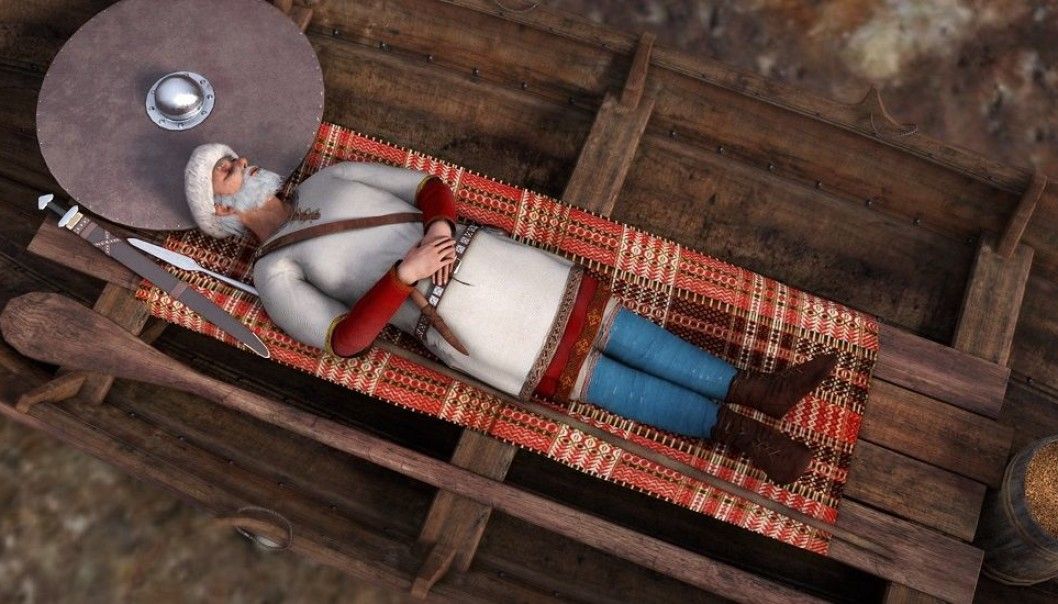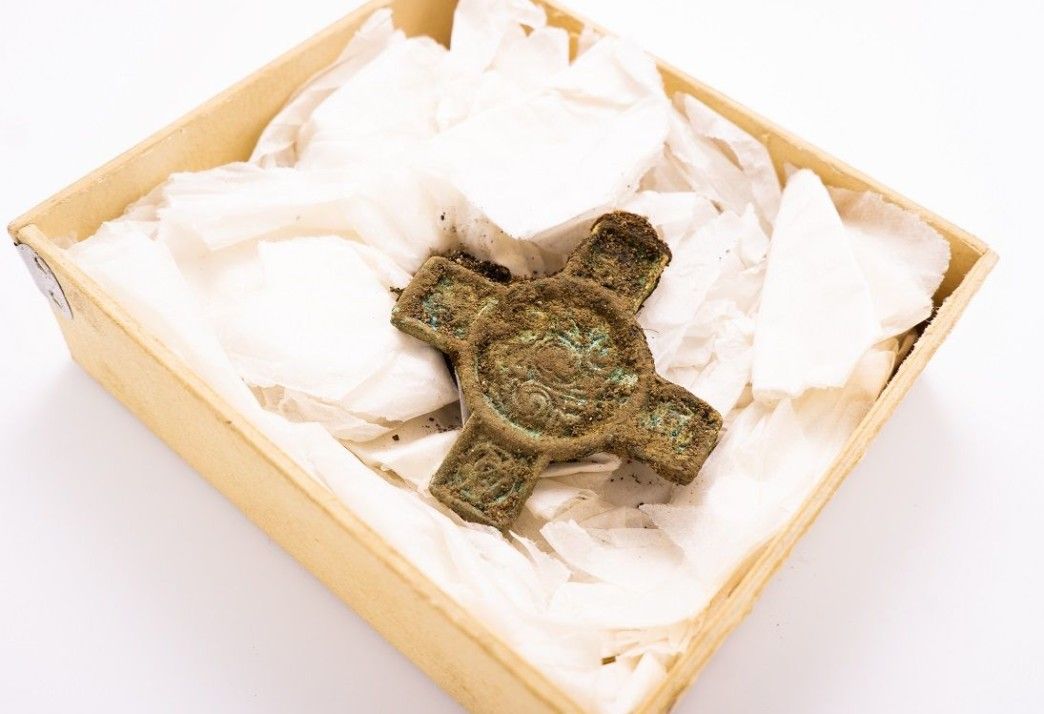Unusual Viking Grave Includes Nested Boats Buried 100 Years Apart
Archaeologists don’t know why the two vessels were buried on top of one another, but the practice may be linked with property rights
Last month, archaeologists excavating the Skeiet Viking farm in Vinjeøra, Norway, unearthed an unexpected burial: namely, a boat containing the remains of a woman nested inside of a second boat occupied by the body of a man laid to rest some 100 years earlier.
As researchers from the Norwegian University of Science and Technology (NTNU) reported in a recent announcement detailing the find, the Viking woman died during the latter half of the 9th century A.D. Her remains were buried in a 23- to 26-foot-long boat filled with grave goods including the head of a cow, two pairs of scissors, weaving tools and a pearl necklace. Two large shell-shaped brooches and a crucifix-shaped brooch made from a decorative Irish harness fitting were pinned on the woman’s dress.
The wood used to build the boats has rotted away, but archaeologists were able to gauge the vessels’ one-time positioning based on a small piece of keel from the smaller boat and rivets from both. Evidence found at the site suggests the grave’s original inhabitant—a Viking male buried alongside a spear, a shield and a single-edged sword dating to the 8th century Merovingian period—was carefully excavated before the small boat was placed inside.

“We know of several double burials in boat graves,” Raymond Sauvage, an archaeologist at the NTNU University Museum who oversaw the work, tells Newsweek’s Aristos Georgiou. “However, in those cases we are dealing with two—or more—persons buried in the same boat. We also know of burial mounds containing several, parallel boat graves.”
The newly discovered arrangement “is essentially an unknown phenomenon,” according to Sauvage.
An obvious question raised by the find is why the two individuals were buried together. Unfortunately, the researchers say it will be difficult to determine if the man and woman were related. The soil present at the dig site is poorly suited for preserving bone, so the only remains recovered were small fragments of the woman’s skull. The team plans on extracting DNA from the bones, as well as conducting isotope analysis to discover where the woman was born and what her diet was like.
Sauvage posits that the man and woman were somehow related, as the nested burial was intentional and must have required planning.
“Family was very important in Viking Age society, both to mark status and power and to consolidate property rights,” he says in a statement. “The first legislation on allodial rights in the Middle Ages said you had to prove that your family had owned the land for five generations. If there was any doubt about the property rights, you had to be able to trace your family to … burial mounds and paganism.”

The archaeologist adds, “Against this backdrop, it’s reasonable to think that the two were buried together to mark the family’s ownership to the farm, in a society that for the most part didn’t write things down.”
Sauvage tells Georgiou that the archaeologists can infer information on the deceased’s lives from the contents of their graves. Because the man was buried with a full array of weapons, he was likely a free man who owned his land. The rich jewelry buried with the woman, meanwhile, indicates she was married, played an important role in her community and even managed the household based at the farm. The Irish brooch found on her dress indicates her family was well-connected enough to participate in and benefit from Viking raids.
The team found the nested boats at the edge of the biggest mound in a larger burial ground. Previously, archaeologists excavating the site discovered a piece of a woman’s brooch dating to the early Merovingian age.
“The burial mound must naturally be older than the oldest boat grave, meaning early Merovingian age,” says Sauvage in the statement. “This is a fascinating era in Scandinavian history, from which there are few archaeological findings.”

